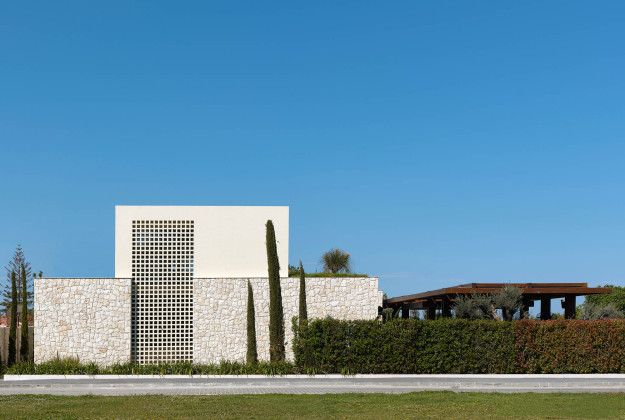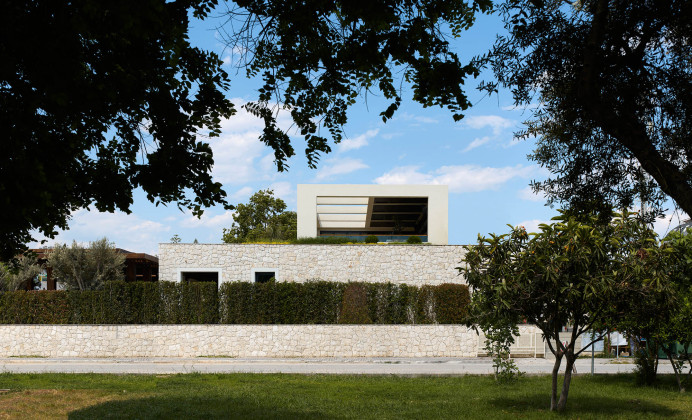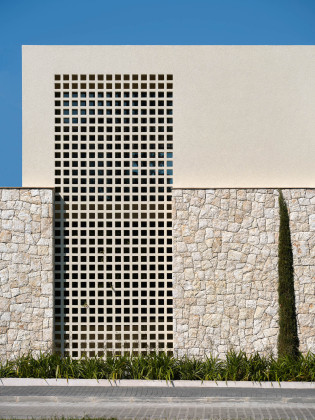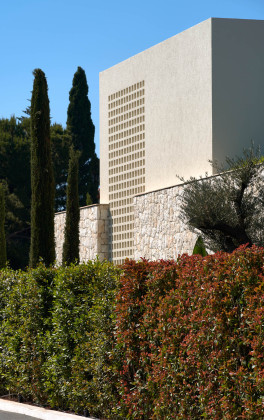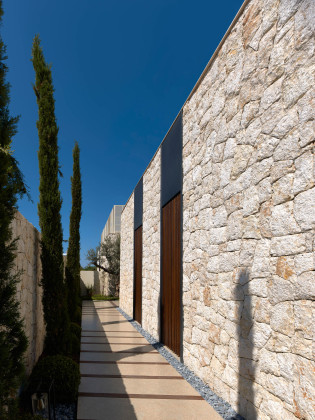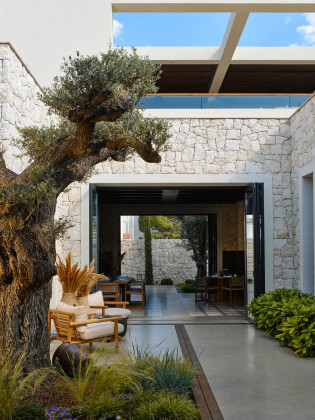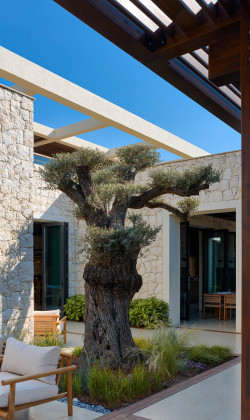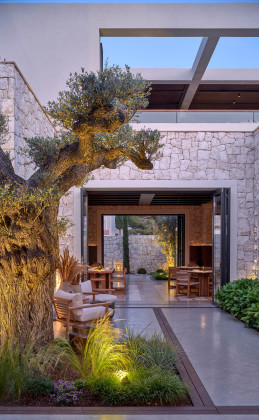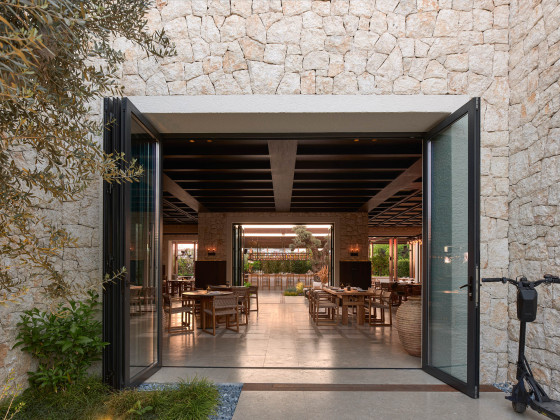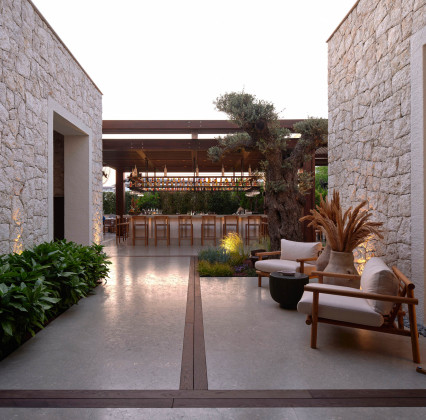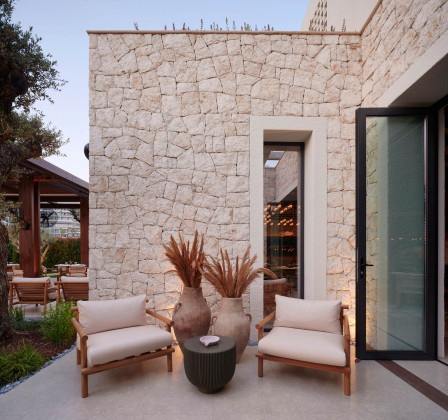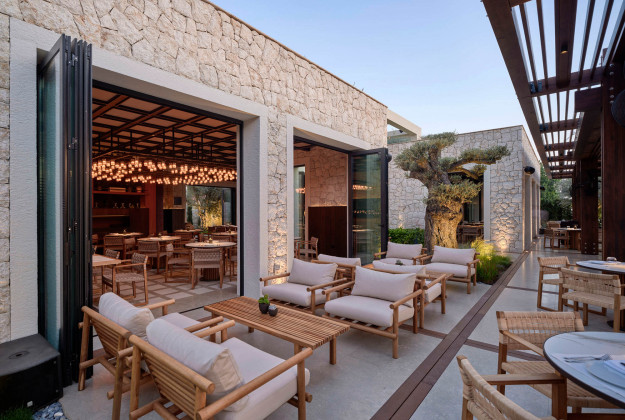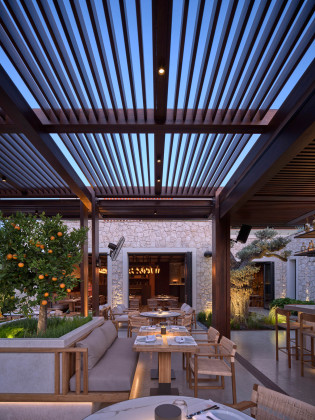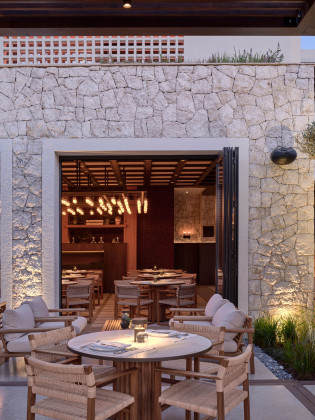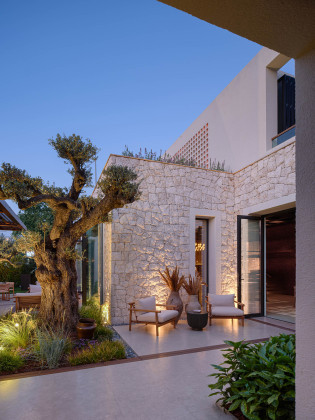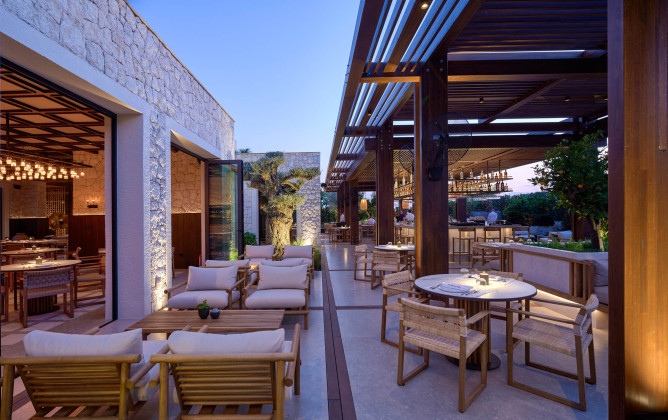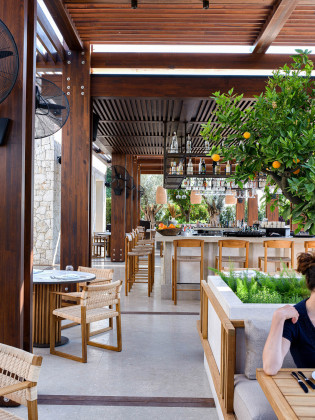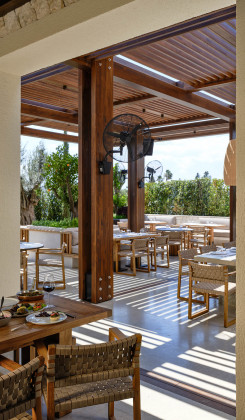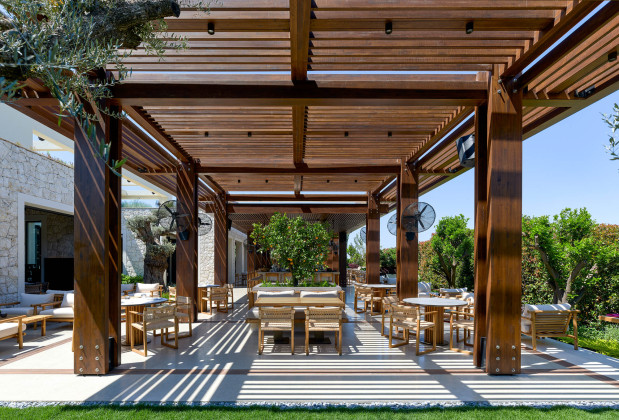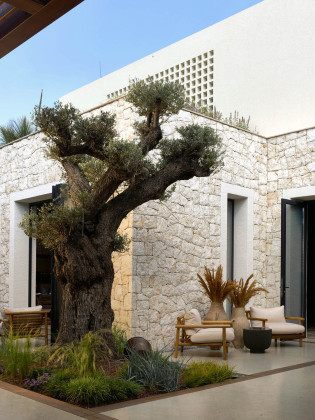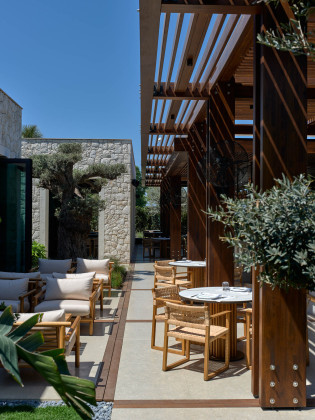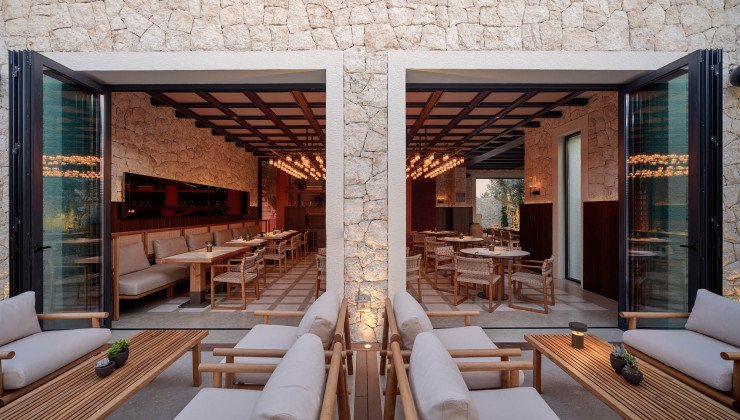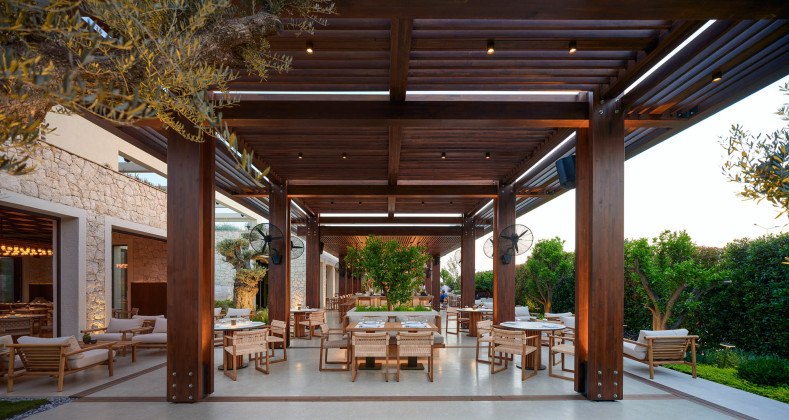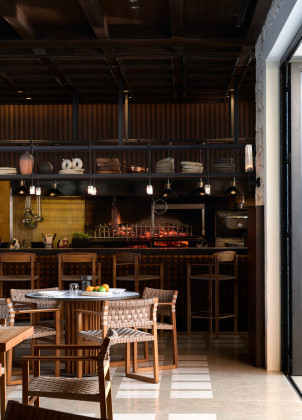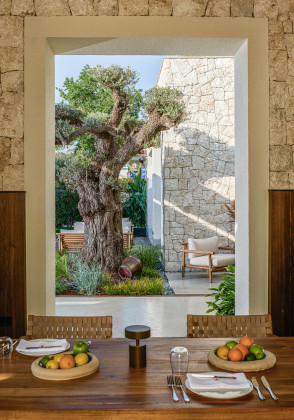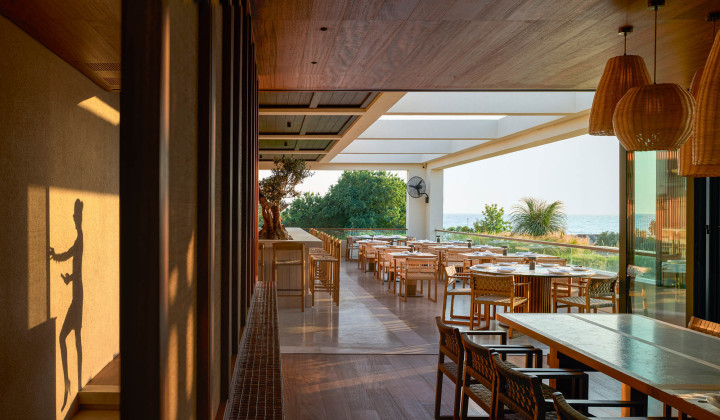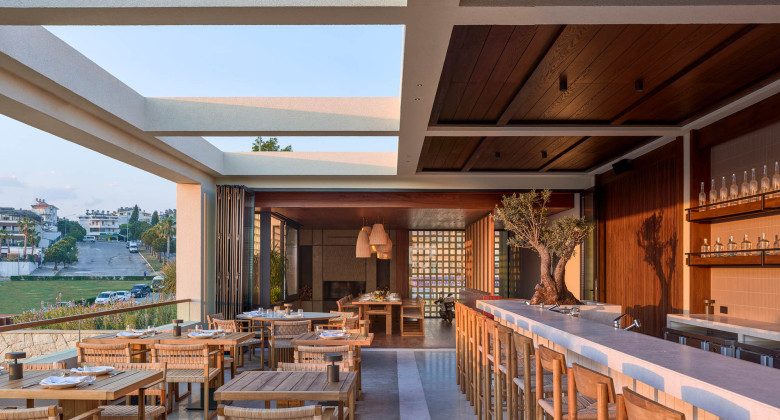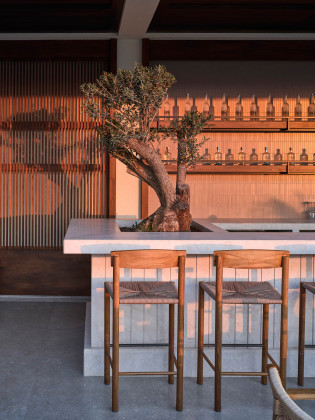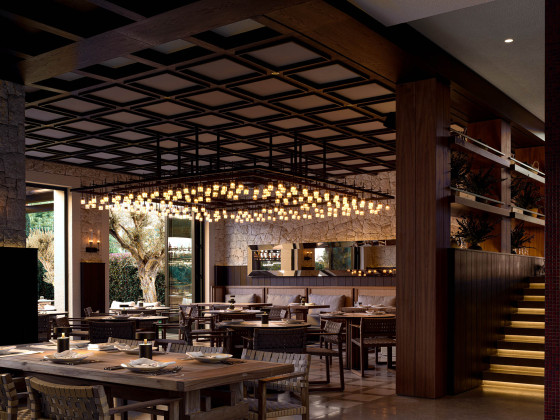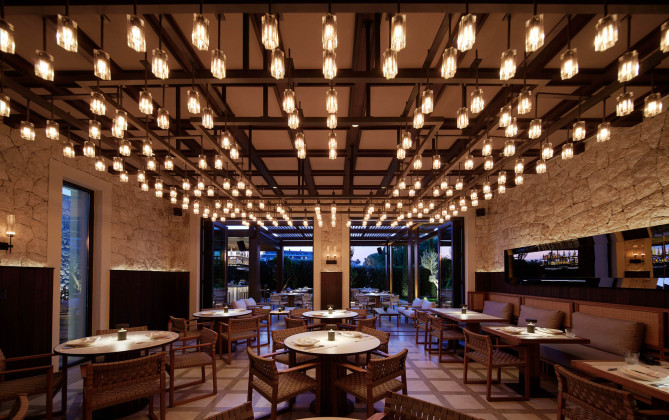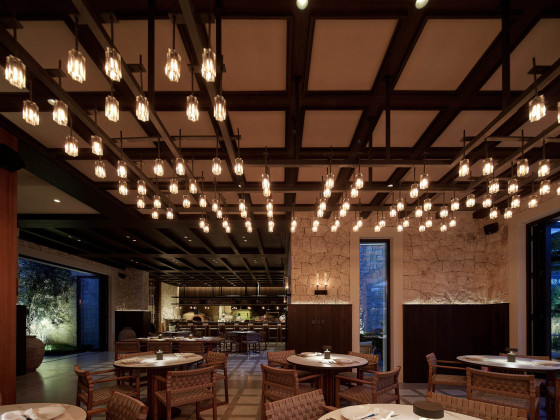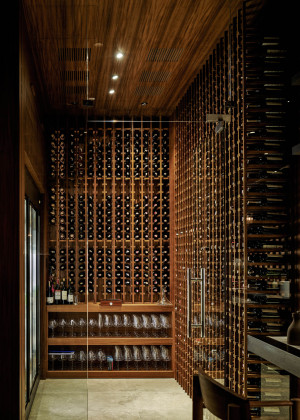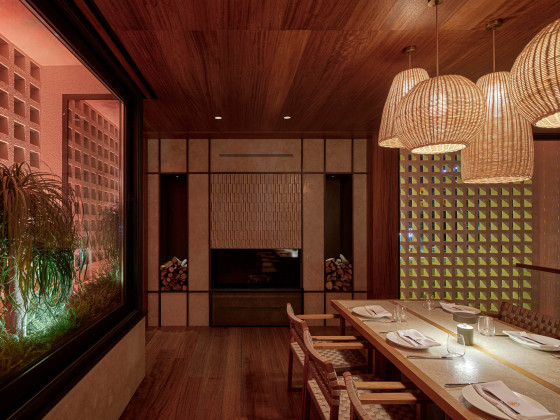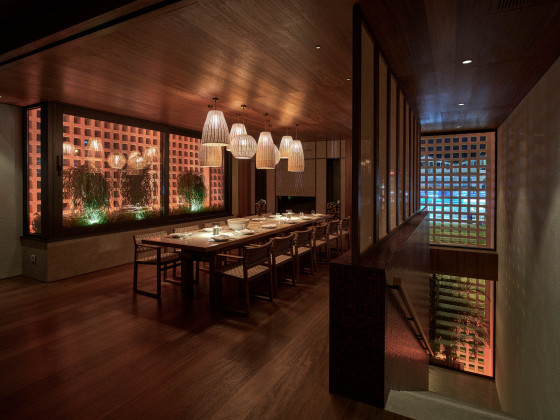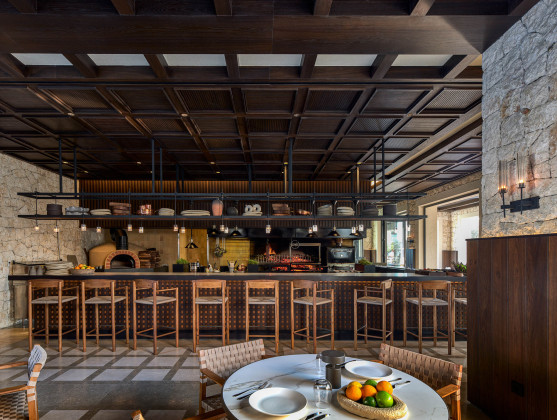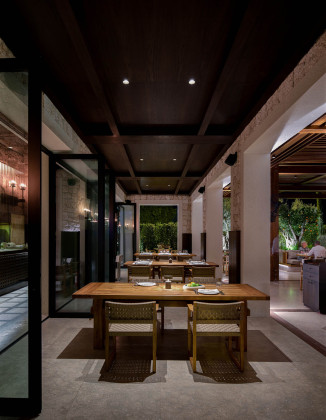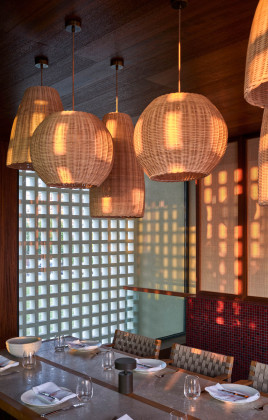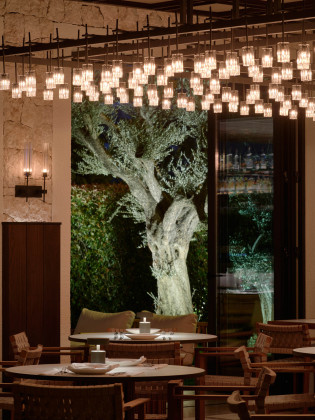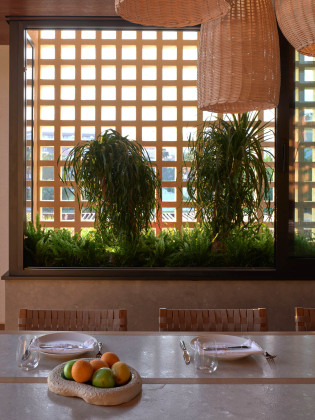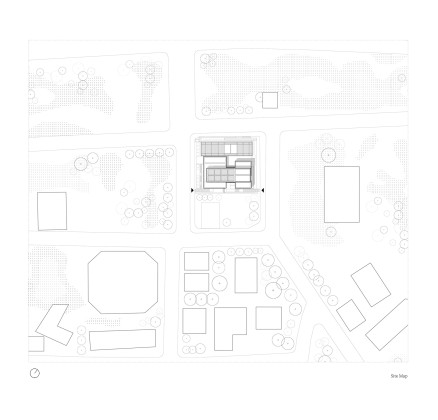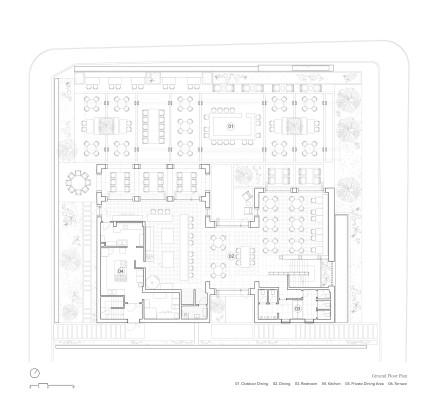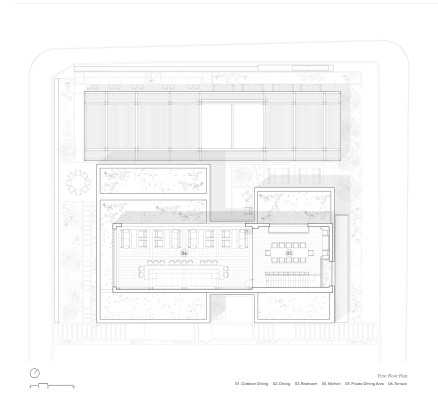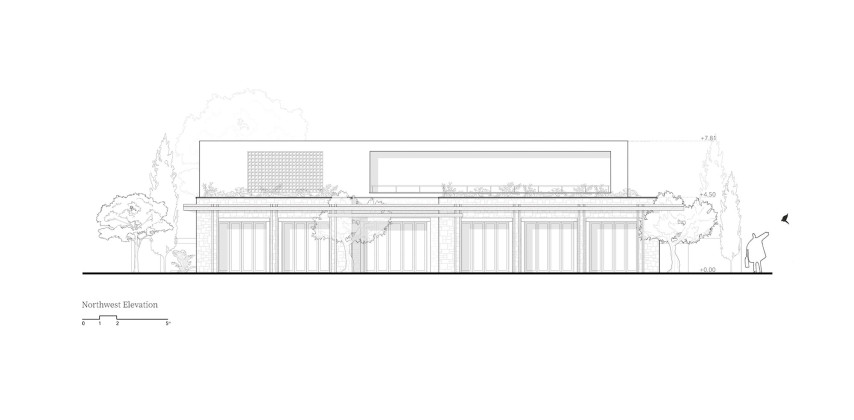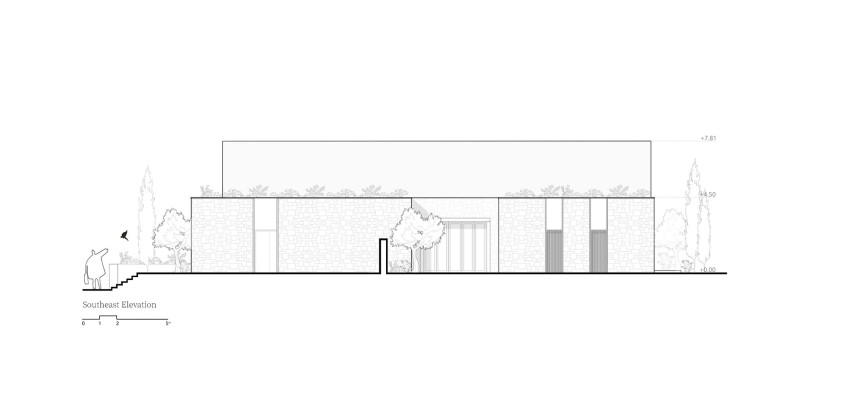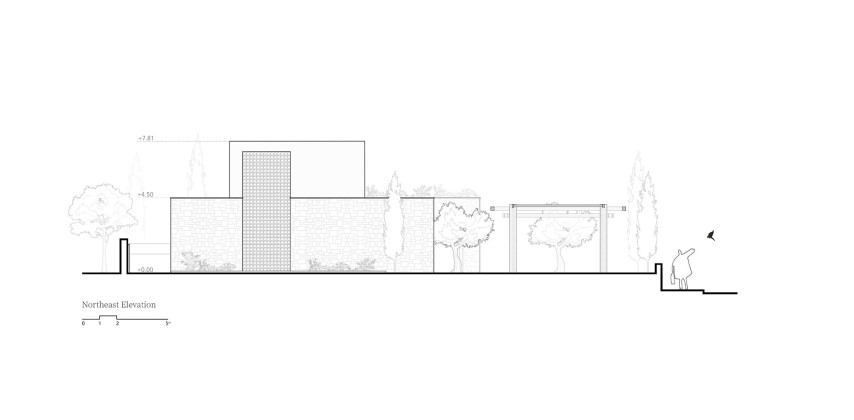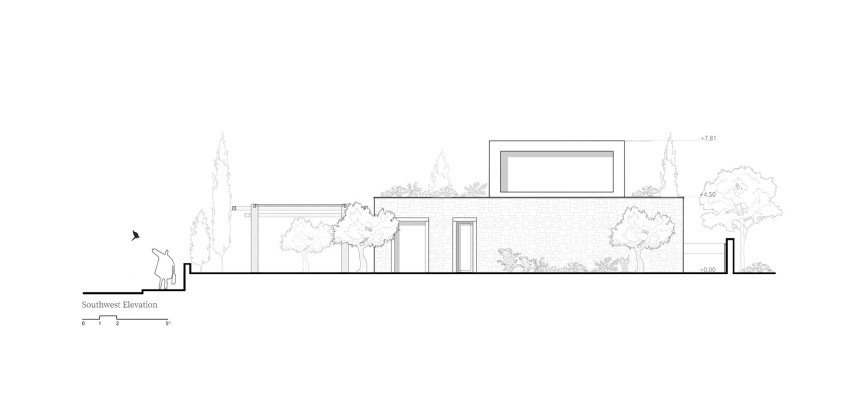Side Alma Restaurant
Located in the Side region of Antalya, on the Mediterranean coast in the south of Turkey, Alma Restaurant is designed by the partnership of KUD Design Studio and BBA.istanbul.
Alma Restaurant is a fine-dining restaurant and bar, which is situated on a plot that is almost flat, very close to the shore, and has no significant environmental texture and landscape. In addition to being one of the oldest tourism regions in Turkey, Side is known for its ancient city and historical texture dating back to the 7th century BC, which is located within walking distance of the project area.
Considering its possible urban impact, inputs such as the project area which is located in a neighborhood that lacks identity both at urban, geographical, and ecological scales, climatic conditions, demographic structure, distorted urban texture, strict program needs, and planning notes that can guide the design were taken into account during the design process.
Considering the design inputs such as the high temperatures during the day, intense sand-bearing winds blowing from the beach, and being in a noise-sensitive residential environment, the first design decision was that the building should be visually private, but also welcoming at first sight. Hosting a water element, breeze blocks, and stone walls, the east facade of the building defines the entrance route of the restaurant by creating a gap with the masonry wall that defines the border with the neighboring lot. The continuity created by the closed, semi-open, and open spaces that are articulated from this gap reaches from the entrance to the open terrace areas. This spatial continuity is defined by the use of architectural elements and materials, starting from the entrance, providing ambiguous open-closed space relations.
Consisting of one basement floor and two regular floors, the building hosts open and closed kitchens, a large wine cellar, restrooms, a closed seating area, and a terrace on its ground floor. The first floor of the building hosts a 50 people-capacity seating area on the terrace and a dining hall purposed to be used in private events. This area, where the warm materials used on the ground floor are more intense and accompanied by a fireplace, has been designed in such a way that it can be transformed into a holistic open space with sliding folding joinery. Accompanied by a fireplace, this area is designed in such a way that it can be transformed into an integrative area using sliding and folding windows. Warm materials which were used mostly on the ground floor are also used in the design of this space, creating a cozy ambiance. The areas with the ground floor roofs are designed as llandscape elements surrounding the upper terrace. The inner garden on the other side of the breeze block facade that welcomes its guests on the entrance facade and the staircase behind it provides circulation between the floors.
Due to the intense program needs of the restaurant, the technical area is hidden in the basement under the western block of the building and the technical terrace on the south facade. At the same time, the routes of the crowded service workers were designed on this axis to serve all restaurant areas from both the closed and open kitchens. As the concept of the restaurant, it was requested that all the cooking and tanning works of the chef and the kitchen team would be behind a kitchen bar and can be viewed from the entire space. From the entrance of the place to the tables positioned at the end, the fact that both the open kitchen and the bar located at the center of the terrace can be experienced by all guests at any time was considered as the basic design input that shapes the composition of the space.
Defining the subtle transitions between the open and closed spaces of the building, the jambs are placed on the terrace façades with a rhythm. They define a semi-open sitting area in a part of the façade, while in the remaining parts, with the help of sliding and folding joinery, they strengthen the indoor-outdoor space relations. Due to the climatic conditions of the region, since the air-conditioning of the indoor spaces can be provided by natural methods, it is foreseen that the joinery, which will only be closed for security reasons, will remain open at all times during the active working hours of the building.
At the end of the indoor restaurant areas, the solid wood pergola following the architectural levels, designed as a part of the architectural masses beyond just having a shading function, covers all the terrace areas and defines the open restaurant area. The seating arrangements around the bar located in the center of the terrace under the shadow of the pergola, turn into fixed ottoman seatings and comfortable sofas that enrich the life in the space, as one moves from the projection of the pergola.
The masonry stone walls that fit comfortably on its land, the verticality accentuating plastered prismatic mass, the horizontal wooden pergola surfaces, and the functions located around the open kitchen of the restaurant shape an efficient working space setup. The restaurant life, hidden behind the dense landscape, finds its place in the city with these very inviting details. Alma Restaurant creates a rich texture with its construction techniques and traditionally used local materials, and is inspired by mediterranean architecture with its minimal space setup that responds to contemporary needs and way of living.
The natural material palette is applied in its raw texture in both architecture and interior design, and it composes the main character of the building. Manavgat stone, which forms its mass on the ground floor, is applied with the dry stacking technique that requires high level of expertise and craftsmanship. Pergolas that provide spatiality on the terraces are made of heat-treated structural pine trees with rigorous engineering calculations in the background. Left over dust from the Manavgat Stone is blended in to strengthen the formula for the plaster of the mass that defines the vertical circulation and the first floor. Jambs and breeze blocks emphasizing the transition between spaces are produced with the in situ casting technique, using a formula that is developed as a result of repeated trials, from raw materials such as dust from Manavgat Stone, fiber, and cement. On the floor, beige natural stone and “Eflani” Stone, in their raw texture, are used. For the interior design, movable and fixed furniture made of iroko, teak, and incense oak trees are in warm harmony with the stone structure. This harmony created by these different wooden textures in the space meets the wine red mosaic cladded wall connecting the stair line, emphasizing the vertical circulation of the building. Aluminum sliding doors are used considering climatic and functional reasons. To differentiate formally from other raw and local materials used in the building, the sliding doors are painted in black in contrast with the general color palette. All of these architectural materials are brought together with the landscape at every opportunity.
Character of the building has come to life by applying both traditional and contemporary construction techniques to local raw materials with great effort of its designers, investors, contractors, chiefs, craftsmen, and most importantly all workers in a limited time with high precision and perfectionism.
 10.10.2022
10.10.2022



